|
Observations: A Summer Travel Log We are well past the Summer Solstice in the Northern Hemisphere, but one thing that is enchanting about June in Iceland (and the auspicious time of the Solstice) is how the long days and the absence of dark and starry nights allowed us to experience the land of fire and ice on our flight to Europe.
Icelanders embrace this time of the year with endless outdoor activities, while nature’s majesty brings back to life the vivid colors of the mountains and the exquisite skyscape of the Midnight Sun. From our plane, we could see the steam rising from active volcanos and the vast landscape being held by deep hues of purple fields of nootka, or Alaskan lupine. Iceland’s winters are long and dark, so when the light returns it is a joyous celebration among the local people, and not-so-local folks, too. Summer Solstice in the land of the Midnight Sun offers hot springs of the fiery volcanoes and tantalizing turquoise waterfalls to explore and ponder. The Icelanders don’t take their landscape for granted. The same is true in Denmark, our recent destination, a place where they cherish beautiful green spaces and honor the nature beings who live there. Copenhagen was our final destination and although the history is rich and the culture steeped in tradition, honesty and happiness, it was the green spaces that deeply called me. Fredericksburg Garden was my favorite. The centuries old park is held by old growth trees and a landscape filled with a colony of blue heron resting in large well-constructed nests woven into a platform with a saucer-shaped cup and lined with pine needles, moss, reeds, dry grass, mangrove leaves, and small twigs. I managed to get a quick glimpse of a hatchlings bluish eyes peeking under the edge of its mother’s wing. This experience reminds me of my own backyard on the Olympic Peninsula in Washington state. A place where nature is dominant with her lush green forests, cool coastal breezes and the deep fjord estuary known by names such as Puget Sound, Straight of Juan De Fuca and the Salish Sea. Where I live, it’s the fawning season. Oftentimes, I see the black tailed mother’s leading their spotted babies to the best places for sweet red clover, grasses, delicious blackberries, and their all-time favorites: flowers found in well cared for gardens of the local inhabitants. There is other wildlife too! I hear a raucous of crows, then I see a raccoon scurrying down a tree after stealing an egg, then a magnificent bald eagle soaring and spiraling overhead while hummingbirds flit from one feeder to the next. I ponder the thought of how a fish in a fishbowl must feel observing the natural world from the inside of a large, orbed window - not much different from the windows of my home. I invite you to explore the programs offered through the Olympic Mountain EarthWisdom Circle (OMEC). Each of these programs encourage a sacred and responsible relationship with the Earth, supporting us to move wakefully through personal and planetary change. From my heart to yours, Lori Ferry' OMEC Board Member “Silence is not the absence of something but the presence of everything… It is the presence of time, undisturbed.
– Gordon Hempton; acoustic ecologist In early June, I flew to Colorado to attend a memorial service. On the first night, I stayed with friends who live up the mountain at 9,000 feet. The 6-inches of snow that had fallen two days before my arrival was all but gone. The meadow next to their home burst with dandelion blossoms and was patrolled by a community of robins who yanked earthworms out of the soil and gobbled them down like they hadn’t eaten in months. But the main attraction was the charm of ruby-throated hummingbirds. From the kitchen window, I watched the zigzagging morning rush hour of green iridescent flashes around the sugar-water feeders that rested on the outdoor table. My friend suggested that we go outside and sit with the birds. She showed me how to place my hands like parentheses around the feeder. The idea here is that the birds can land on our hands, and we can feel their delicate feet and nearly weightless bodies when they finally pause to drink. Even though I was a stranger, they didn’t hesitate to fly in like torpedoes then hover, tilt their heads, take off, come back, hover again and eventually land. Each bird, maybe 30 in total, (though who can count at that speed) seemed to fly in their own choreographed movements of darts and dives and all without colliding. It was exhilarating like a fireworks show and I responded with oohs and ahhs, but the vibration of my voice sent the birds scattering like I’d pulled out a drum and beat it. When I quieted into silence, they returned to drink. Then I felt my nervous system drop into a quiet purr. All the grief I carried with me in anticipation of the memorial and all the stress and hustle of traveling dropped away. Something else happened. I sensed that I shifted into nature’s time, like I’d plopped into a slow river on an innertube and drifted away. I know it sounds contradictory – the quick darting and the slow river drifting – but I assure you it’s possible to hold these two feelings at once. Then my awareness was fine-tuned to the alive-ness of my surroundings. My breathing slowed and I seemed to merge with the place. I sensed and was able to hold all at once – the forest, meadow, hummingbirds, robins, worms, and the line of ants marching to the droplets of sugar water pooling under the table. People often say that time slows in experiences like this, but it felt time-less. I could have stayed there all day. I even said to my friend, half-jokingly, that hummingbird therapy should be a thing. The truth is, we all have access to this sort of “therapy”; it’s just a matter of dropping in. So when I attended the memorial two days later, which was held outdoors on a rooftop overlooking town, I took a moment to tune into the place: the jagged Flatirons, leafing cottonwoods, giant red poppies, and a soaring hawk just overhead, remembering that I could hold both – the quick darting and the slow river drifting – the grief and the gratitude of knowing such a wonderful person during this lifetime. I invite you to explore the programs offered through the Olympic Mountain EarthWisdom Circle (OMEC). Each of these programs encourage a sacred and responsible relationship with the Earth, supporting us to move wakefully through personal and planetary change. From my heart to yours, Christina Burress OMEC Board Member Hello Friend,
I was walking the land we live on, which is something I do on a fairly regular basis. Oh, I have my regular sit spot where I go just to be still and observe the landscape, both inner and outer, but walking the land is a different exercise. When I am walking, I am checking to see what is happening in the natural world as I move through it. Where has the fox decided to den this year? What birds are nesting in which trees? How much fresh pitch is flowing from the pine trees? What herbs and flowers are blooming? Are our beehives getting ready to swarm? I’m slowly moving along with mindful awareness, open to experience. It took many years for me to be able to do this. It seems like such a simple thing to just walk and be present. But is it really? The mind is constantly clambering, and shoving every distraction it can come up with, into our consciousness. What should I make for dinner? I wonder what’s going on at work. Is so and so angry with me because I said such and such? Did I forget to turn off the gas in the forge? You get the picture – our mind, our most powerful tool, can also be our greatest bewilderment. Mindfully paying attention on purpose, in the present moment with curiosity, is no easy task. Our world is overfull of information coming at us as in a constant barrage of sound and image from television, social media, and radio. Ads scream for attention, memes look for likes and shares, and soundbites try to draw us in. We are served an endless litany that drives want and desire. It’s easy to get pulled in and to lose sight of what is actually important. A few months ago, I made the decision to button up my social media account. I maximized all my privacy settings and turned off the notifications. At first, it was kind of distressing to not be in constant contact to that which I’d become accustomed. It was a big change. Not spending so much time on my phone or tablet has reminded me of many things. Years ago, I received a teaching that said experience is not twice given. Something does not happen out there and then again inside of us where it is processed. Our lived experience happens externally and internally at the same time. We and the natural world are born afresh together as one in every moment. What a beautiful gift. We don’t create our own reality. Reality occurs where perception meets perspective. It is where what we are looking at meets where we are looking from. When we look from our authenticity without bypassing, something magical happens. We see the abundance of our being. All the parts that we have shoved away as being without merit are revealed as the gems that they truly are. When we say every part of me is welcome here, our perspective changes. The weight of expectation shifts, and we are able to have our experiences rather than collect them. This is a big distinction. When we interact with nature as nature, we are being our truest self. A couple months ago Jonathan Hammond gave us an incredible piece. In it he described how honoring our inner truth and authenticity makes us "dangerous". This really resonated for me. Looking around at the constructed modern world, there is little space for us to just be a unique spark of the universe learning about itself through play. The time for each of us to be just that is here. Now, please take the time to head out into the natural world wherever that is for you and sit, walk, notice, and be openly curious. I would leave you with a quote from Martin Shaw. I think it mirrors what Jonathan said, "No more tame language about wild things". From my heart to yours, Christopher T. Franza, OMEC Board of Directors a sense of belongingIt’s the 10-year anniversary of OMEC so let's celebrate with inspired poetry and prose. The 6-week virtual spring gathering for the nature-inspired writing course, Remembering Our Place in the Sacred Circle of Life, that I (Christina Burress) recently completed facilitating brought participants together via Zoom from Norway, England, and the US, including New York, Illinois, New Mexico, Oregon, and California. We started simply. Our daily intention was to spend at least 5-minutes outside as a way of strengthening our senses and deepening our connection with the natural world. Then each week, participants were offered curated materials with a particular focus like gratitude for our ancestry, recognition of our land of origin, the interplay of the elements, our interconnection with animal and plant kin, and the configuration of our geographical environs. During our last meeting, I asked participants if anything had shifted for them – had a new story merged? Overwhelmingly, the responses included an increased sense of belonging. The writing that follows is a glimpse of the type of artful expression inspired from the simple practice of noticing, engaging, and dialoguing with nature. MOUNTAINS AND BORDERS by Jessica Deguara One teaspoon at a time Mountains are moved to the ocean. It seems impossible, incomprehensible That this is so. But it is so, and beyond the limits of the human mind. The Earth has been here for eons, Composite of compounds and elements from Galactic explosions at the beginning of time. It humbles me to know how short a moment We humans have been here on the Earth And what a calamitous mess we have Made of it. Where did we go wrong? Was it some evolutionary mistake? Are we writing ourselves out of history now? As Mountains continue to move from high peaks to oceans over millions of years One teaspoon at a time. What the silence said: What do you love more than what you imagine is your singular life? This is the fundamental problem of humans: Imagining we are all separate: Not Whole or One: That this is where we come from and are. Evolved with this sense of separateness, individuality We create borders and divisions. Can we begin to dissolve these solid walls perhaps a teaspoon at a time, one breath? (A bucketful would be better as there’s an urgency here.) Love our oneness more than singularity? To connect to our Soul and the Oneness of all beings and the Universe, Consciousness itself, Is the new beginning, The New Earth, the formation of a new landscape, where we merge and are in harmony with the ebb and flow of life and death Lose our definitions, become softer, flow, as One, One breath at a time. Merging by Jill P. suspended in air, tasting nectar, a moment of joy and all melts into everything, leaving you and me in focus, connecting through thought, flitting from flower to flower tasting the sweetness offered, curiosity and innocence blend into wholehearted love, boundaries broken as our bubbles of energy connect and merge, the buzz of a bee brings me back to the beginning, watching a hummingbird, tasting nectar from the lemon flower. Dear future children of the world, There will probably be moments when you will feel lonely, sad, and truly lost. In Those moments when you will be desperately searching for truth – some words you can rely on – but there might be none around you. Well, in bouts of despair, find a tree, a stone or a hill, and lean on it. Suddenly, you will feel a strong wall behind your back, the warmth and shagginess of the bark under your hand, and the chilliness of the sand under your feet. You will feel a fundamental power of life around you that moves clouds in the sky, assists mountains to take their shape, encourages birds to sing their best song, and empowers tiny creatures to build their castles… They all work hard to fill the space around you with their lives, and you are always invited to fill theirs with yours. – Nadja
I invite you to explore the programs offered through the Olympic Mountain EarthWisdom Circle (OMEC). Each of these programs encourage a sacred and responsible relationship with the Earth, supporting us to move wakefully through personal and planetary change. Remembering Our Place in the Sacred Circle of Life is offered again in the Fall from September 6th to October 11th. Please email me at christinamburress@gmail.com with any questions. I hope to see you there. From my heart to yours,
Christina Burress OMEC Board Member "Our contest is not against flesh and blood; rather, the authorities of the world and the spiritual hosts of wickedness." - Paul, Ephesians 6:12
Whether it is the daisy, the shark, the porcupine, the thunderstorm, the rainbow or the caterpillar, every being of nature is "of itself so". In other words, everything in nature spontaneously expresses itself without apology, artifice, or self-consciousness. Nature always remains true to itself; it never turns on itself or denies itself what it yearns for or what is good for it. Every nature-being serves and contributes to the collective by simply being exactly as it is, and the overarching energy of nature is an ecstatic and celebratory intention to simply create itself further. Human beings are also beings of nature. But instead of living unencumbered in our authenticity, embodied in our truest expression, joyfully celebrating our individuality, and living lives of creative engagement, we have been domesticated by an over-culture of conventionality, binary thinking, and moral judgment. From the moment we are born, the spark of our divine singularity goes through a systematic process of eradication as we learn from society, family and the media to adhere to a matrix of rules, social conventions, armchair morality and mistaken beliefs that are not, and never were, our own. This mass surrender to the "institutional authority" is not just a sociological phenomenon, but a spiritual crisis. To become domesticated; to relinquish our wildness; and to assimilate to a "mainstream" over-culture requires us to exit our bodies, betray our feelings, and dismantle our instincts and intuition. We succumb to the pressure of the culture by worshipping a false god; an infectious entity; an evil spirit which the Gnostics termed the "Demiurge". The Demiurge is the false god of the binary - the mainstream and conventional ideas of good/bad, black/white, right/wrong, light/dark. To be locked in the binary is to be enslaved in a world view that is mired in division, isolation, separateness, paranoia, anxiety, fear, and falsehood. We are in the Demiurge's thrall when we place our individual authority into the hands (and the whims) of others, and when we turn away from our fundamental essence. We are not, however, without recourse from the clutches of the Demiurge. Embedded deep inside our bodies and held in every one of our emotions is an evolutionary life-force that contains the seeds of our true nature - this is our wildness. No matter how much our wildness is obscured or buried, this defiant river of life; this unrelenting soul-current flows within us. To reconnect with our wildness is to excavate and to honor our authenticity and our inner truth to such a degree that we become, as a wise Grandmother once described it, "dangerous". So, the invitation from our OMEC community is to go into nature, and to remember that your exquisite self is of the exact same essence of what you see and experience all around you. There is nothing that you have to do but to own your belongingness on this earth and with it your wild nature. YOU decide what’s true: This is your birthright toward your becoming. Aloha from Maui, Jonathan Hammond Liminal transition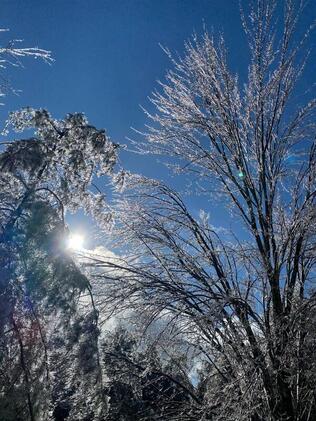 Hello friend, I have always been an enthusiastic fan of February here in the Catskills. To me it is one of the great unsung liminal times. Although astronomically Spring here in the northern hemisphere does not start until March 20th climatological spring starts on March 1st. Here we start the month with the bitter cold of the deep winter but by the end its usually a free for all where anything can happen. We have subzero days and days in the 50s. We see rain, snow, ice, clouds, sun, high winds, dead calms, thaws, and freezes. Local streams start to break up and the land and more than human world starts to ease out of winter’s deep slumber. The treacherous boilerplate hard ice that the month started with will be slush in many places by the end. Our cats Peme, Mema, Phish, and Chief, who have been little more than warm, fuzzy lap lumps for months, have started making short forays around the yard but soon return inside to the warmth of the windowsill. Not quite ready to wander the world in the curious, aloof way that a cat is wont to. This transition from the bitter winter cold and ice to milder defrosting is something I look forward to each year. It is not that that I do not like the winter months, they are extremely beautiful, but the returning of the warmth and increasing daylight are palpable reminders that what has been resting is gathering energy to burst from dormancy in a vibrant display. We spent the beginning and middle of the month with the trecenas of Kan/Serpent and Tijax/Flint. A trecena is a 13-day week in the Mayan calendar and each trecena is named for the energy glyph that the week starts on. Kan and Tijax both have strong associations with the telluric energy of Mother Earth. We moved into the Trecena of B’atz/Monkey on the 23rd. The Weaver of time. How fitting as this is an energy of new threads and patterns being woven into the fabric of our lives. Unlike the curious aloofness of my feline companions Monkey has an innocent flavor to its curiosity. An open wonder that looks at existence as a canvas and ponders what to create. As winter is closing and spring is setting in, perhaps this is a ripe time to do as Monkey. What do you have in your internal landscape that has been resting this winter? What dormant seed do you hold that is just now beginning to rouse at the beckoning of the increasing light and warmth ahead? How do you plan to paint the canvas before you and what experiences will be the colors? From my Heart to Yours, Christopher T. Franza OMEC Board of Directors A Brief Encounter with an American Pika Animals are wonderful teachers. A brief encounter with the American Pika sparked my curiosity about what this small but resilient creature could teach me about my ability to adapt to the changing environment on Earth. In late September, my husband, son and I set out for a 3-day backpacking trip out of Convict Lake, in the Sherwin Range of the Sierra Nevadas in California. We’d planned to camp our first night in the Owens Valley, but poor air quality made it inadvisable. The small towns on this stretch of Highway 395 know all too well the long term economic and health effects of yearly droughts and fires. In August, the Caldor Fire burned over 200,000 acres (including more than 1,000 structures), threatened Lake Tahoe, filled the Owens Valley with smoke, and precipitated a month-long National Forest closure. At the time of our trip in September, the KNP Complex Fire threatened the ancient trees in Sequoia National Park and Kings Canyon, and was the source of the eerie orange sky that reduced visibility and made it hard to breathe. To avoid the smoke, we drove another 100 miles to gain elevation. We arrived at the Mammoth Lakes campground (8600’) close to dark and quickly ate a meal before diving into our tents for warmth. That night, an unseasonable cold front dropped temperatures into the 20s. The winter-like gusts whipped across the lake and through the grove with such a roar that we didn’t hear mama bear and her cubs open the unlocked bear box to eat the neighbor’s sweet bakery items. The next morning, the air quality was much improved so we decided to go forward with the trek. I tell you all this because even though we thoughtfully prepared for this trip, studied maps, secured wilderness permits, and checked weather, a lot of what we were faced with required us to adapt to new circumstances. So much is out of our control; being flexible isn’t one of them. Animals are attuned to their environment because they are their environment so adjusting to what presents itself is part of their survival skills. We are our environment too, but we’ve forgotten and separated ourselves with walls, roofs, cars, and technology. We could learn a thing or two from our animal kin who seem to be problem solving in response to climate change. We might not like it when bears ransack campgrounds and enter mountain homes but you’ve got to hand it to them for finding high caloric food on a regular basis! 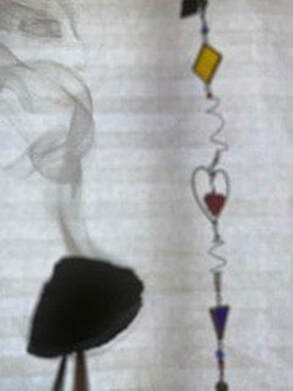 Convict Creek Trail gains a lot of elevation in a short distance. My husband and son seemed well suited for the challenge, more like mountain goats traversing a wall, compared to the two-legged slogger that I was with my too heavy pack and sea-level lungs. But no incline could overshadow the beauty of this particular place with its steep slopes, towering boulders, rushing creek, high meadows, aspens in autumn performance, and a full surround of dramatic peaks including Mt. Morrison (12,000’) and the flows of Sevehah Cliff. Every night at the earliest sign of dusk, when the temperature dove, I’d crawl into the tent, utterly exhausted, and not emerge until first light the next morning. I needed the rest and my body was doing its best to adapt to the challenge. At dawn, on the last morning of our trip, my son Nick said the light was perfect at the edge of the lake so I wandered off to investigate. On the map, Lake Dorothy looks like a teardrop and I was standing at the point. From there, I could see the farthest side of the lake and all 147 acres of glass-like water that is home to brook and rainbow trout. I couldn’t get over how the lake held the entire scene of mountains, trees, and sky in her reflection. I was part of this scene too and felt a real belonging. Without a camera, I was free to listen and observe as a way to tune my senses to the unfolding morning. At 10,000’, Lake Dorothy is considered an alpine lake. Her clear water is bordered by talus and scree that is mostly slate grey and garnet red. Coniferous and deciduous trees line one side of her, but where I stood, it was all tumbled rock. In the stillness of heightened awareness, my peripheral vision caught a flash of movement. I remained motionless so that I wouldn't interrupt the scurrying and darting of the nimble rock traveler. Except for the bald eagle on our first day and the nearly invisible ventriloquist-like chipmunks, we hadn’t seen much else, so I was excited to be in her presence. It’s the first American Pika I’ve ever seen and I knew she was my teacher for the brief encounter. American Pikas are part of the lagomorph family, which includes hares and rabbits. They weigh between 3 and 5 ounces, with small rounded ears, no tail, and the ability to survive harsh winters without hibernating or migrating. They are industrious and hardworking. During spring, summer and fall, they prepare for winter by collecting and stacking as much plant material as they can because they know, at some level, that the long months of winter means slim pickings. Their three-season collection serves two purposes: a generous pantry and lifesaving insulation. A quick search on the American Pika will produce an array of articles about their preciousness, declining numbers, and call for immediate conservation. It’s believed that pikas don’t do well at temperatures over 78 Fahrenheit, which means that with rising temperatures, their futures could be jeopardized. If pikas have to climb higher in elevation to seek cooler temperatures, it might mean that they’ll eventually run out of mountain and food. Arizona State’s Professor Andrew Smith has been observing the pika for over 50 years and says they are adjusting. Scientists have observed them foraging at night, thriving in habitats and climates that aren’t historically theirs, and changing typical behaviors that make them less detectable to intruders and predators. This feels a lot like hope. 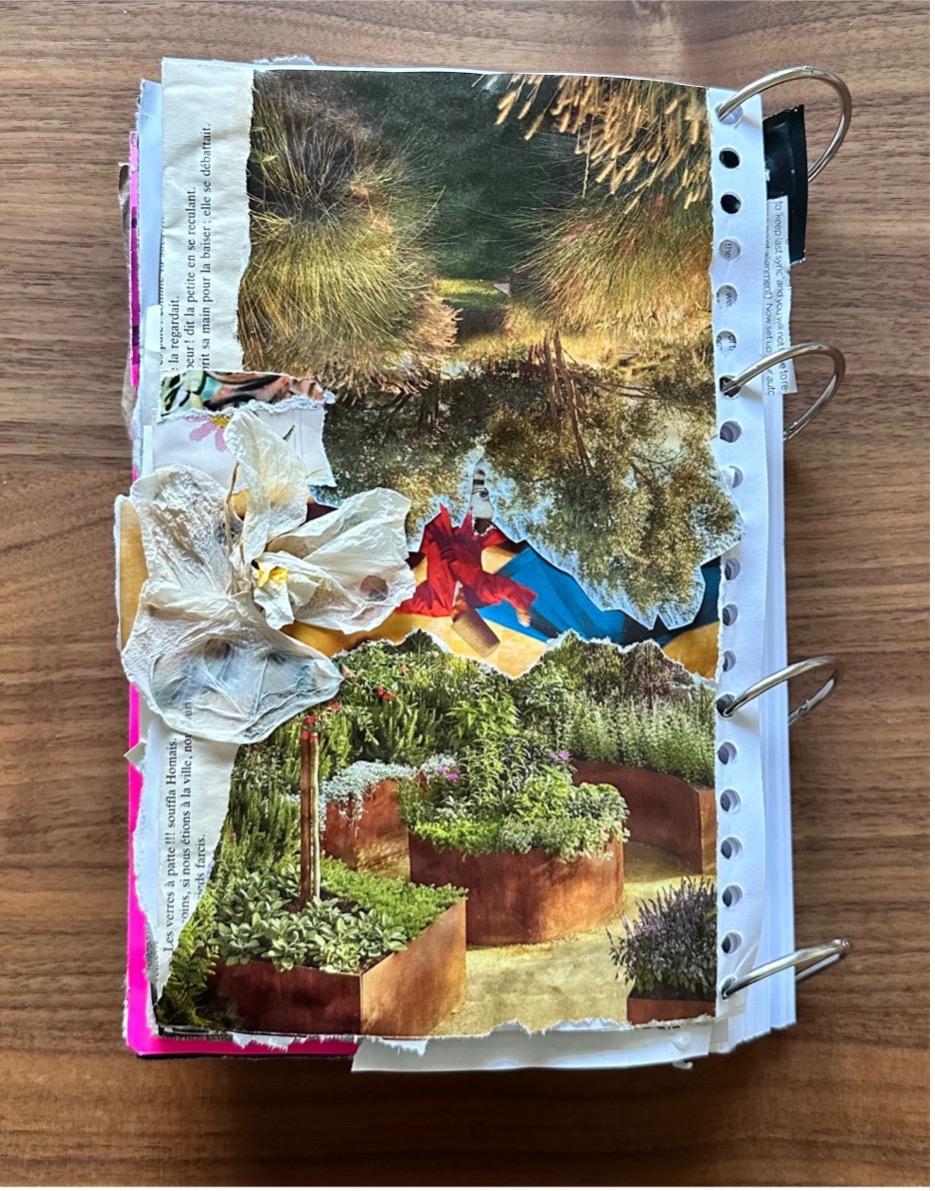 The chance encounter with the American Pika was a gift. From that moment, I’ve been considering the practice of adaptability. We are not in control of the changes occurring on the planet, but we can remain light on our toes, quick in our thinking, and awake to our environment if we hope to maintain good health and a long life. We already do this to some extent. Aging requires us to adapt to our new strengths and weaknesses. Illness or physical trauma helps us reprioritize what is most important. Losing a loved one, a job, our home, etc. demands from us a new learning. We are adaptation specialists and so, apparently, is the American Pika. I invite you to explore the programs offered through the Olympic Mountain EarthWisdom Circle (OMEC). Each of these programs encourage a sacred and responsible relationship with the Earth, supporting us to move wakefully through personal and planetary change. From my heart to yours, Christina Burress OMEC Board Member Photo credits: #1 by Nick Burress, #2 by JD Burress, #3 by Frédéric Dulude-de Broin Winter Solstice Reflections As the blanket of winter covers us is in the Northern Hemisphere, I was called to share two pieces of writing that recently arrived in my life. May you find peace this season, greet the darkness, and honor the mystery of life and death. Winter's Cloak By: Joyce Rupp and Macrina Wiederkehr This year I do not want the dark to leave me. I need its wrap of silent stillness, its cloak of long lasting embrace. Too much light has pulled me away from the chamber of gestation. Let the dawns come late, let the sunsets arrive early, let the evenings extend themselves while I lean into the abyss of my being. Let me lie in the cave of my soul, for too much light blinds me, steals the source of revelation. Let me seek solace in the empty places of winter's passage, those vast dark nights that never fail to shelter me. A Celebration of Winter Solstice By: Joyce Rupp and Macrina Wiederkehr There is a tendency to want to hurry from autumn to spring, to avoid the long dark days that winter brings. Many people do not like constant days bereft of light and months filled with colder temperatures. They struggle with the bleakness of land and the emptiness of trees. Their eyes and hearts seek color. Their spirits tire of tasting the endless gray skies. There is great rejoicing in the thought that light and warmth will soon be filling more and more of each new day. But winter darkness has a positive side to it. As we gather to celebrate the first turn from winter to spring, we are invited to recognize and honor the beauty in the often unwanted season of winter. Let us invite our hearts to be glad for the courage winter proclaims. Let us be grateful for the wisdom winter brings in teaching us about the need for withdrawal as an essential part of renewal. Let us also encourage our spirits as Earth prepares to come forth from this time of withdrawal into a season filled with light. The winter solstice celebrates the return of hope to our land as our planet experiences the first slow turn toward greater daylight. Soon we will welcome the return of the sun and the coming of springtime. As we do so, let us remember and embrace the positive, enriching aspects of winter's darkness. As we embrace the shifts from light to dark and steep in a period of hibernation, I invite you to explore the programs offered through the Olympic Mountain EarthWisdom Circle (OMEC). Each of these programs support us in building a sacred and responsible relationship with the Earth, opening us to the ever-changing rhythms around and within us.
From my heart to yours, Crystal Hawks 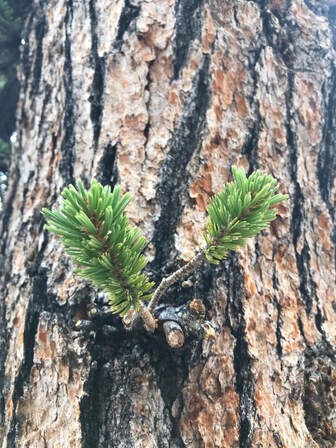 What we need is a great, powerful, tremulous falling back in love with our old, ancient, primordial Beloved, which is the Earth herself. – Martin Shaw I am still buzzing from the beauty that was born from the 6-week writing course, Remembering Our Place in the Sacred Circle of Life! The sharing and writing that came from the group of writers from Toronto, New York, Georgia, New Mexico, and Oregon was awe inspiring and deeply healing. What seemed to resurface time and again was the surprise and delight born from the realization that the land in near proximity, places we might have been living and exploring for many years, still has lessons and gifts to offer once we slow down and take notice. We made time for stillness, journeyed to sacred spaces, and woke up our imagination with daily practices. Then, through a variety of text, audio, and visual samples, participants were invited to find voices and imagery that inspire their own writing to reflect and honor the rhythm of the natural world. Our teachers included the elements, animals, plants, and the curves, peaks, and valleys of the physical land. Recognizing the natural world as our kin reminded us of the inextricable relationship we have and revealed a generous source of creativity. Below you will find the work of three participants. I invite you to step into the work with your whole heart.
Tree Prayer By Sue Carduelis O Great Creator, Thank you for the morning sun on my back, so my needles glisten in the light. Thank you for the children’s contagious joy and for my sweet admirers from the church. Now in autumn we, the evergreens, catch the eyes now that those other trees have dropped their oh-so-colourful leaves. Let me stay here, healthy, to watch generations of children grow and flourish! In the name of the Holy Spirit, Amen. A Rainy Day Hawthorne By Concetta A. Butera Having a difficult day, I decided to take a walk outside to the labyrinth. In the back of our land, surrounded by many beautiful species of trees there is a sacred space… away from all the trials and challenges of the day. I had noticed the Hawthorne tree a few days before when I had walked around the labyrinth. It was almost like she invited me to stop and say “Hello” before I proceeded. I thought how interesting; I had never stopped and noticed how quite beautiful she was with her bright red berries against her green and brown bark and dark green leaves. This day, even though it was cold and raining, I decided to stand in her presence. The wind was gently blowing and the rain was lightly trickling down her leaves. Not being a fan of rain, I had no intention of staying long but her energy of warmth, comfort and acceptance, drew me into a moment of stillness and peace; and then… I heard her, the Hawthorne tree, spoke to me: Come to me my friend, lay your burdens down I will wipe away your tears I will calm all your fears Come to me I will comfort you I will enfold you with my soft embrace I will show you the way We are the same you and I Made of the same magical elements… Those that formed us and the whole Universe into Being I stand here before you, to be a reminder Accept yourself as I accept myself Open your heart and Be all you were created to Be! Remembering Our Place in the Sacred Circle of Life is being offered again in the Spring from
March 2nd - April 6th, 2022. For more information you can email Christina at christinamburress@gmail.com or go to her website at https://www.christinamburress.com/ to learn more. Testimonials: This class deepened my awareness in and of nature and gave me tools to enhance my expression; whatever I write now will be more intentionally rich and, I hope, more skillful. -Sue C. An awakening experience into all the aspects of Mother Earth and all she has to offer us , right outside our door! I would highly recommend this course to anyone interested in nature, creativity , inspiration and writing – Concetta B. Christina offered so much richness each week! I loved it—and I am very grateful for the chance to go back to it all. I found the mix of poetry, essay, video, recording and journeys/visualizations effective, inspiring. – Joanne About the Teacher: Christina Burress has been teaching writing since 2007 to students of all ages. She has designed and implemented both in-person and online courses whose aim is to increase confidence, inspire creativity, and encourage artistic collaboration with the natural world. She currently teaches at the University of California at San Diego Extension’s Creative Writing Certificate Program and the School of Education’s Arts in the Curriculum Masters degree at Lesley University in Cambridge, Massachusetts. Christina is a Shamanic Reiki practitioner. She holds a BA in Rhetoric from the University of California at Berkeley, and a MFA in Creative Writing from Naropa University. She earned an Expressive Arts Certificate from Sky Mountain Institute and a Certificate in Indigenous Cultural Awareness from First Nations Technical Institute. www.christinamburress.com Corn teaches that anything in its full maturity gives of itself. The mature tassels of Corn plants generate pollen that is offered out, blown about by the winds to enter that lustrous, silky part of the Corn so those juicy kernels can grow. Mature land gives out to the animals and to us; its rich soil nurtures and feeds all that grows. Mature water bestows moisture and is steeped in minerals that benefit the land, animals, and people. Mature forests offer shade, shelter, beauty, food, and love and wisdom we have yet to explore.
Prosperity means different things to different people. A curious example is of a Mexican healer, a curandera I worked alongside in a mental health center decades ago in Colorado. This woman was caring with everyone she met. She also looked after her childhood community in Mexico. When money was needed back home, the curandera used to go to a shopping mall and approach a stranger who appeared to be in need. She then brought this person a nourishing meal and shared meaningful time with him or her. In turn, the curandera told me, “Within a week I received an unsolicited donation for the amount we need at home. I give from my own heart and pocket to someone who really needs it, and that energy unfailingly returns.” It’s natural to desire and seek for ourselves and our families. Everyone wants to be happy and prosperous. Yet if we only breathed in and never breathed out, or if we only ate food and never expelled food waste, we would die. In the same way, the soul thrives through giving. Corn teaches that life fills us according to how we give ourselves to it; the fire we stoke is the fire that blazes. The Earth offers abundantly to all her children, and when we give back, really put our hearts to it, we entrain with our Mother and harmonize with her creatures. We join with nature in remembering we are the same light and love. As we give of ourselves to others, Nature, and all of life, I invite you to explore the programs offered through the Olympic Mountain EarthWisdom Circle (OMEC). Each of these programs support us in building a sacred and responsible relationship with the Earth, opening us to the rhythms of giving and receiving. From my heart to yours, Llyn Cedar Roberts, MA Founder and President |
Details
Archives
March 2024
Categories |
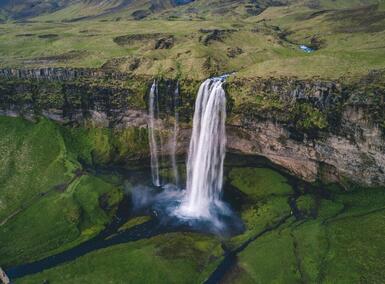

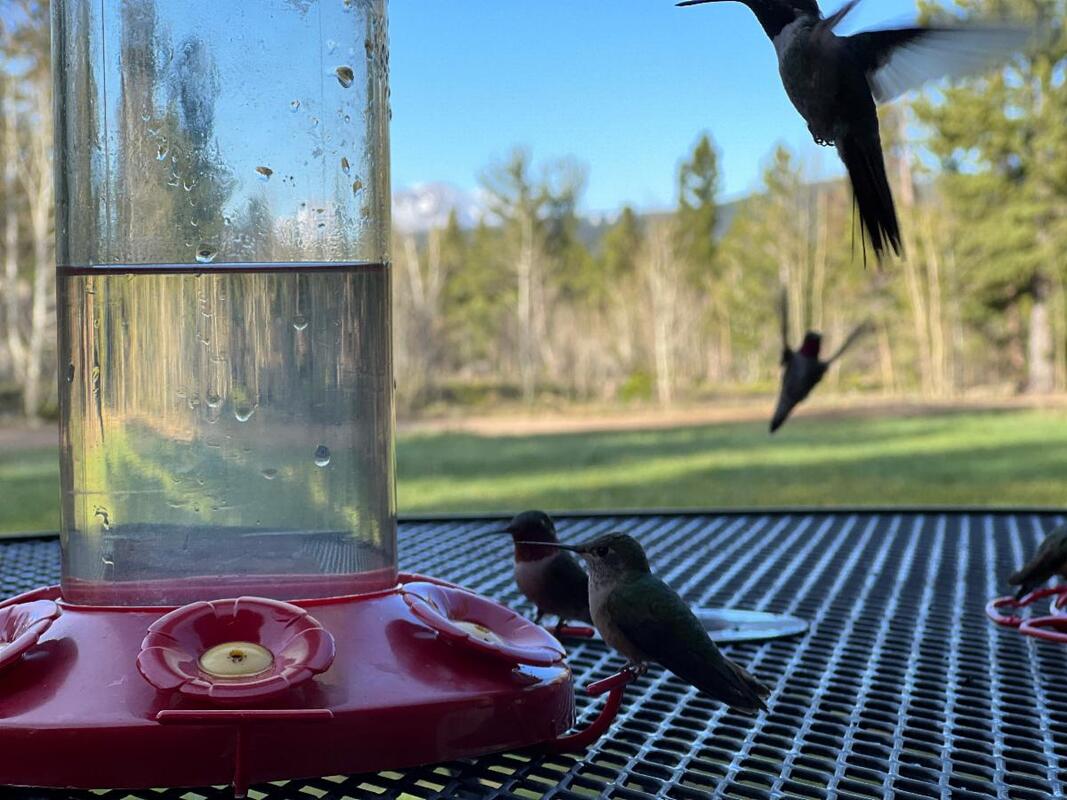

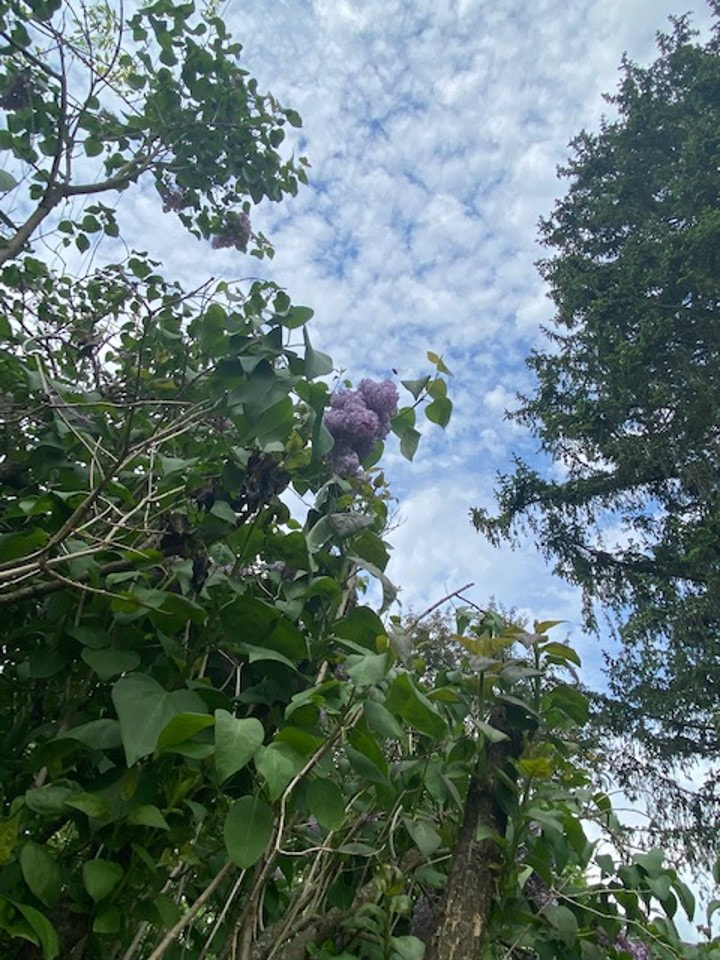
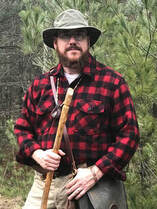
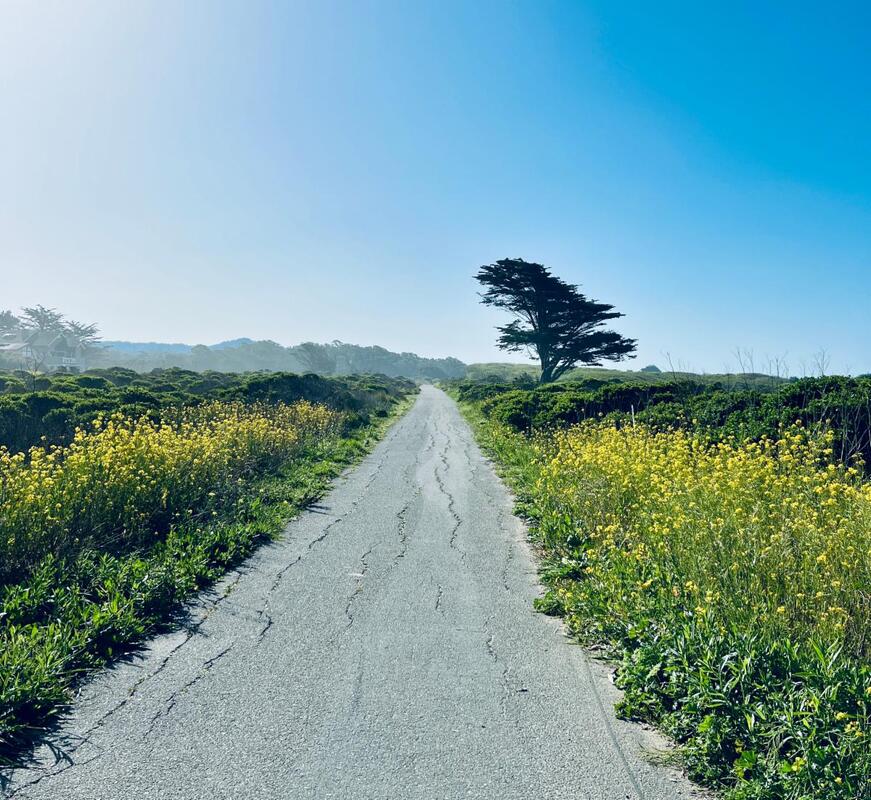
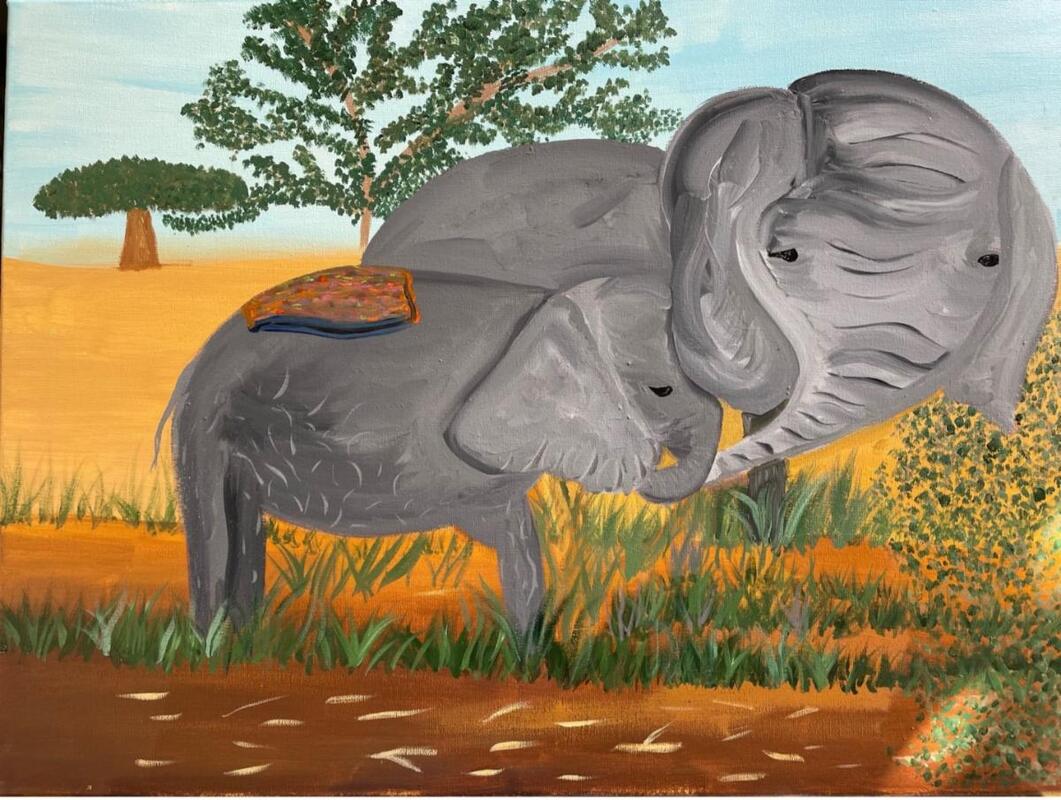
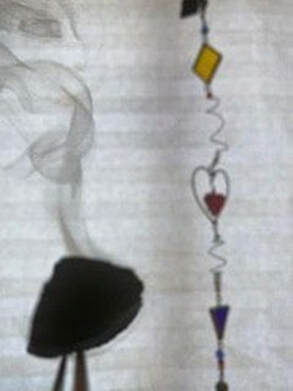
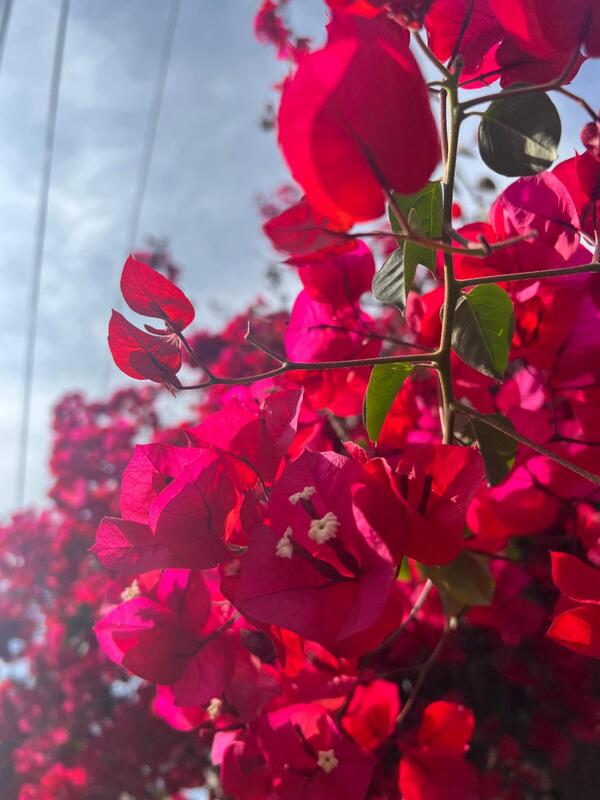

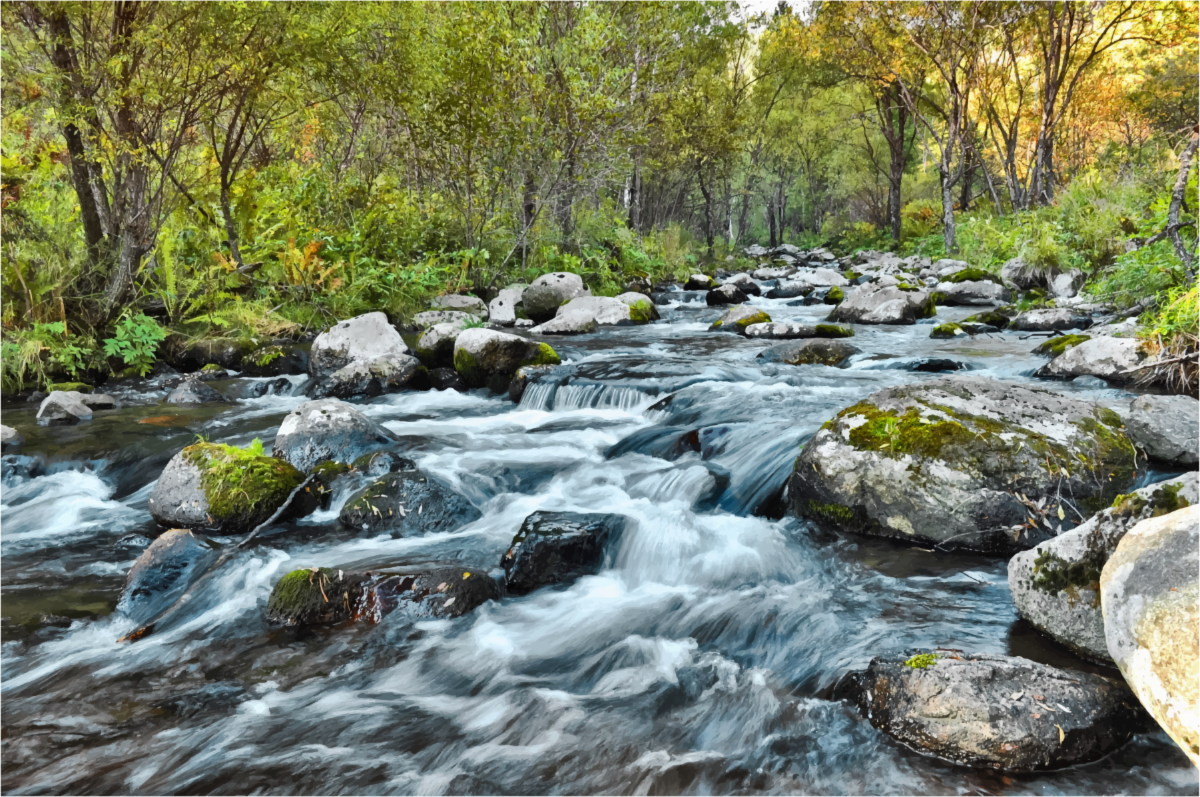

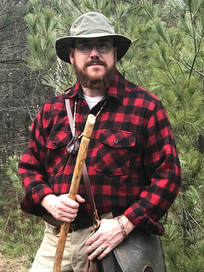
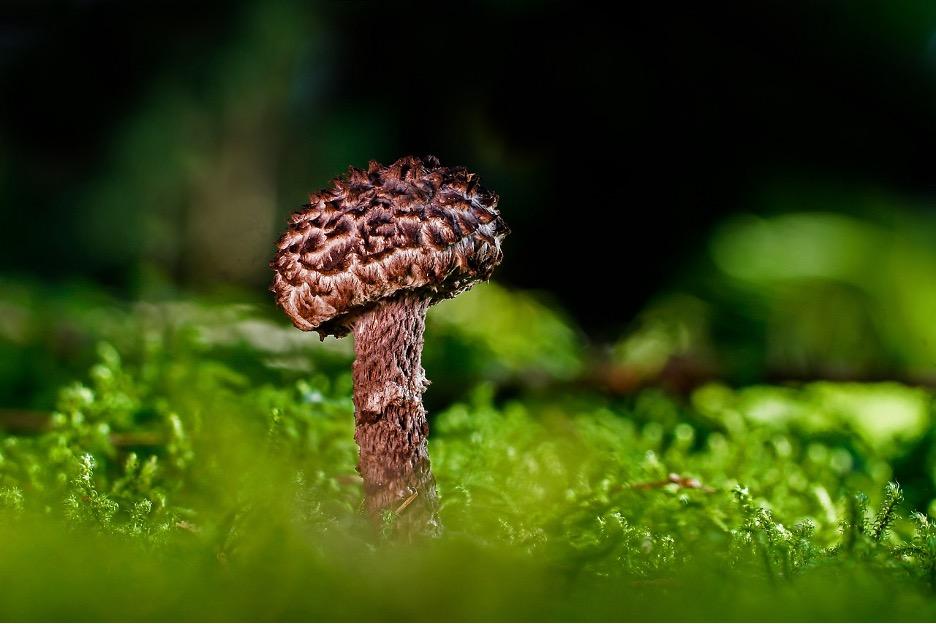

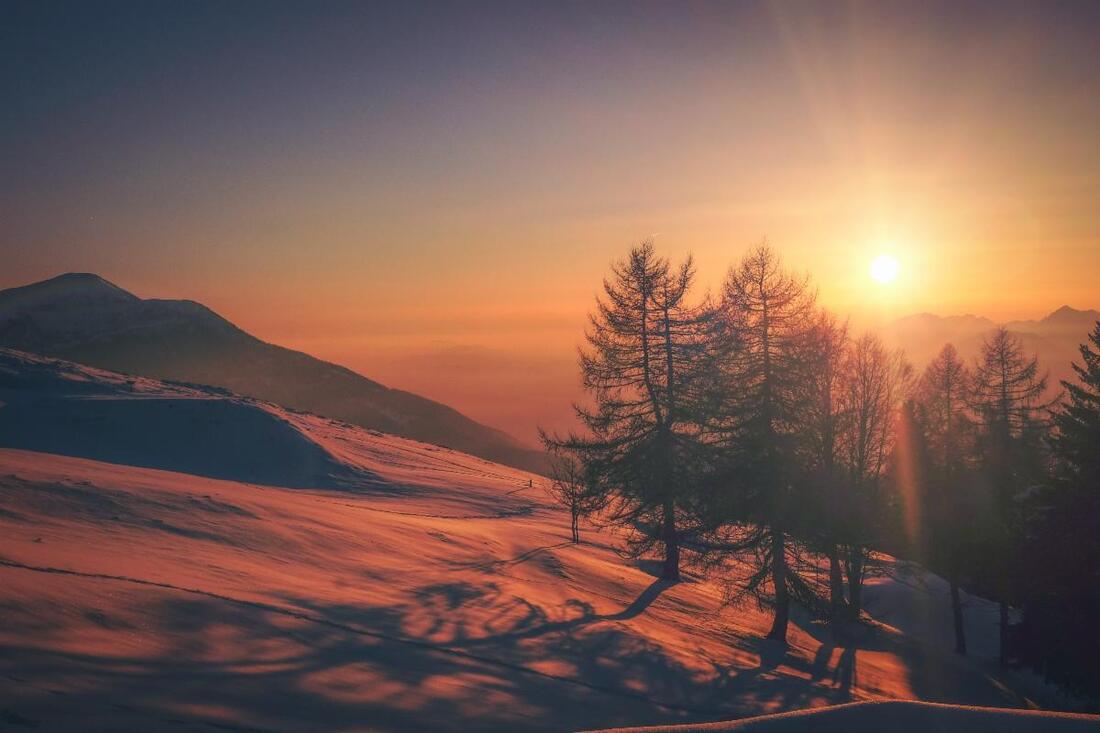
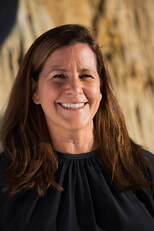
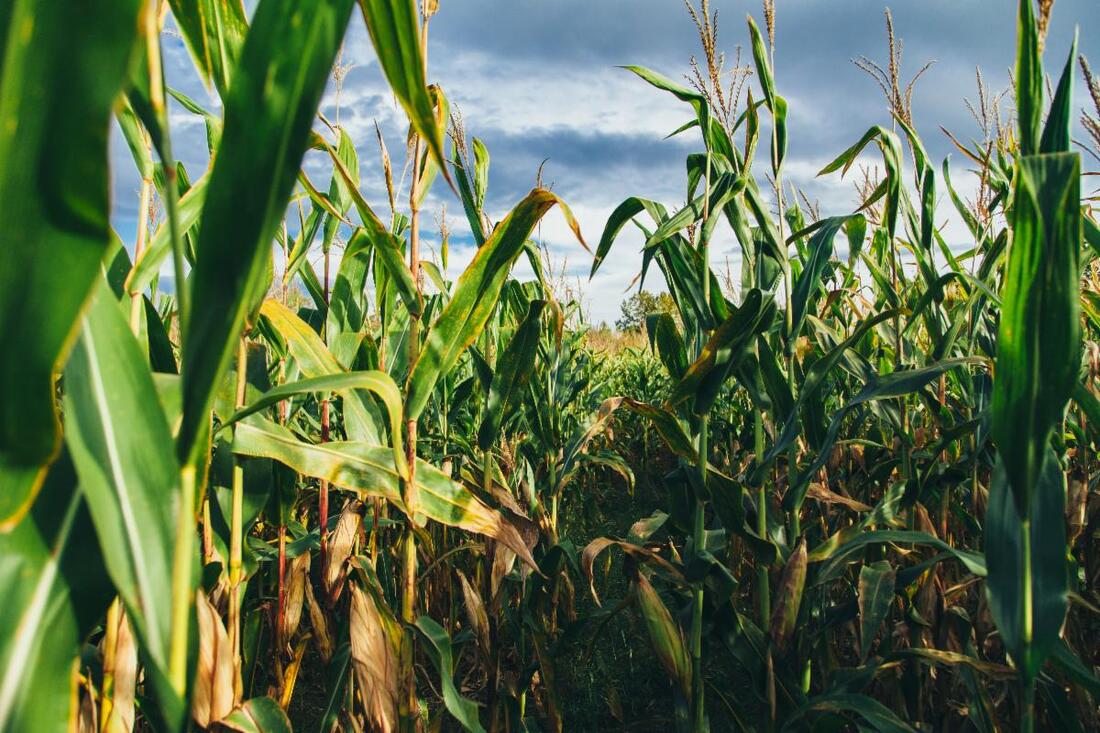
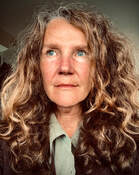
 RSS Feed
RSS Feed
